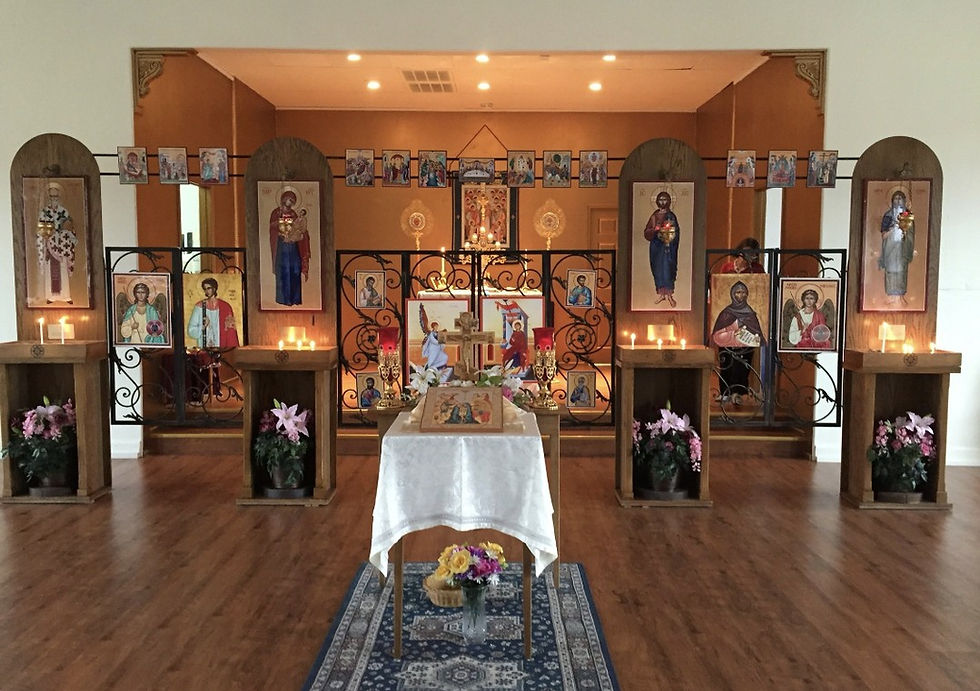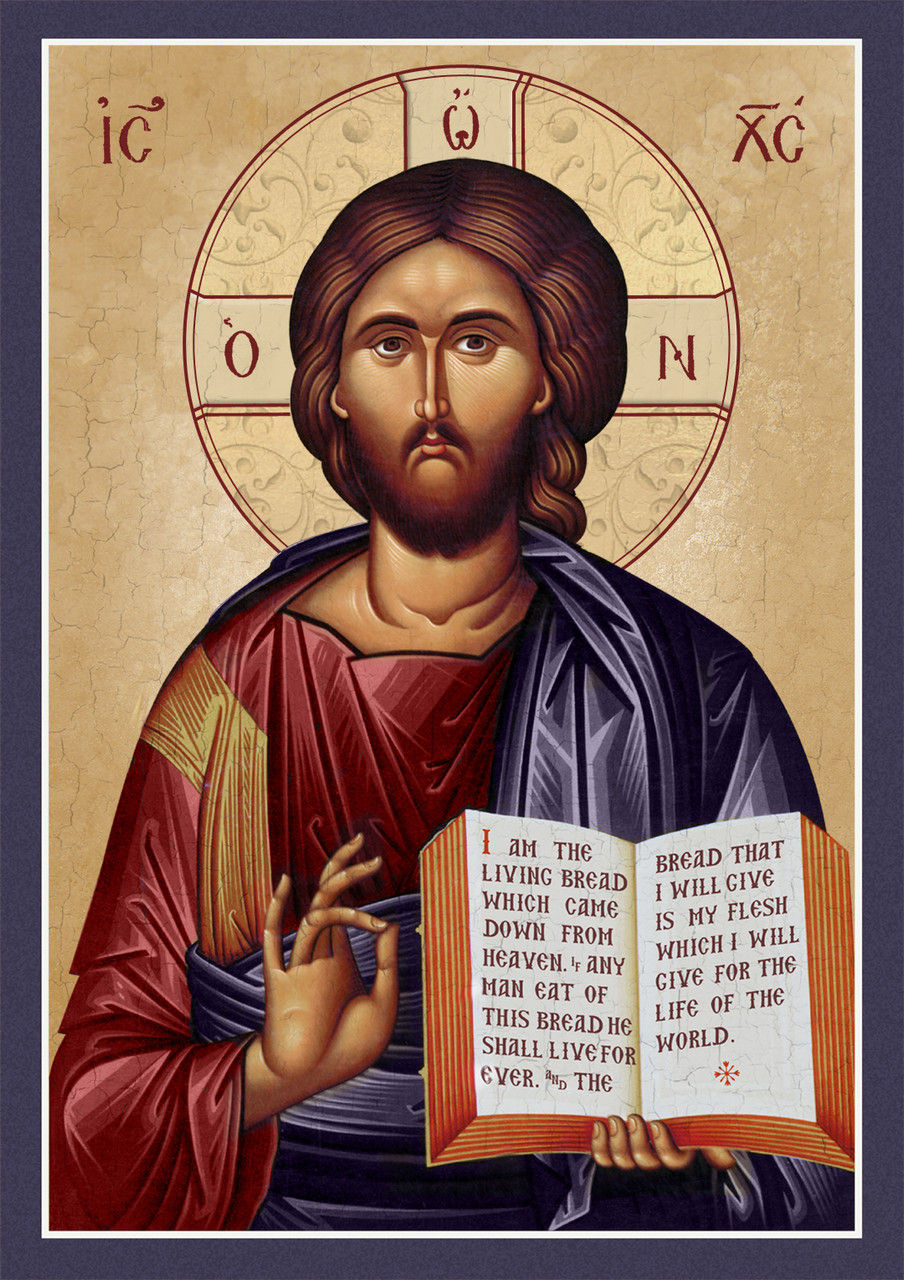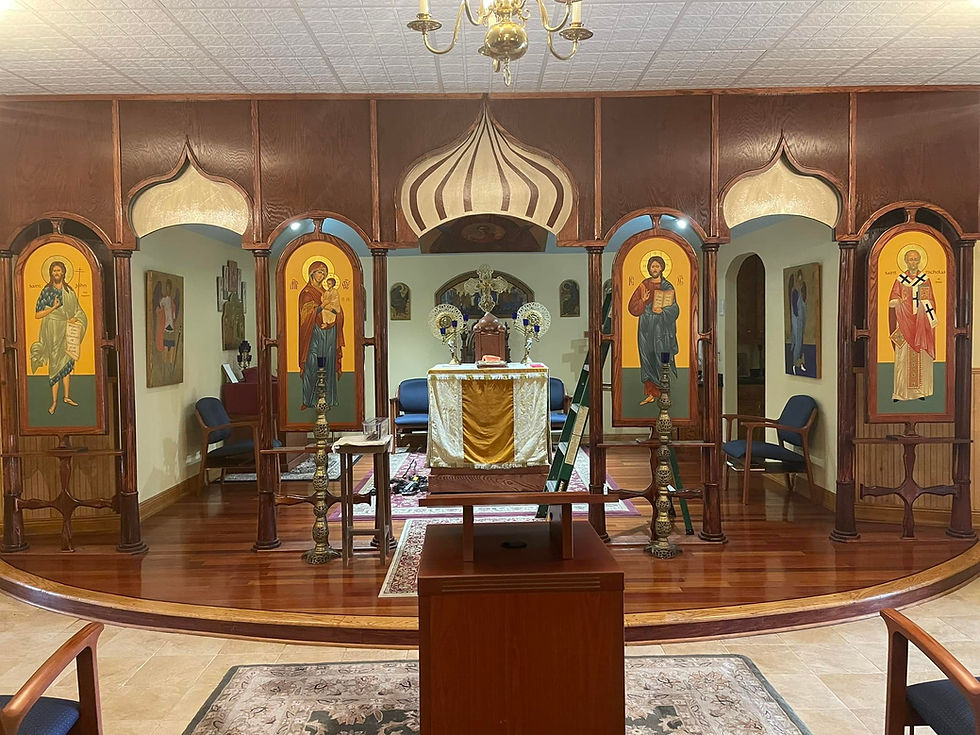What to Expect at Divine Liturgy (Mass)
- byzantineoutreacho
- Jun 1
- 4 min read
Updated: Jun 22
If you are curious about ancient liturgical practices and the rich traditions of the Byzantine Catholic Church, exploring a community like St. Nicholas of Myra Church in New Orleans and Byzantine Outreach of Acadiana can be a rewarding journey. With a focus on inviting individuals from various backgrounds, this community offers a welcoming space to learn about and engage with the Byzantine Catholic tradition.

What to Expect
The Divine Liturgy is a sensory feast, blending sung prayers, incense, and vibrant iconography. It typically lasts about 1.25 to 2 hours and is conducted standing, reflecting the Eastern emphasis on the Resurrection. You’ll notice an iconostasis—a screen adorned with icons—separating the altar from the nave, symbolizing the divide between heaven and earth. The atmosphere is communal, with active participation through singing and responses. Expect a lively mix of reverence and joy, even from young children who participate fully.
Order of the Divine Liturgy
The liturgy is divided into three main parts, each with a specific focus:
Liturgy of Preparation (Proskomedia)
Conducted privately by the priest and deacon before the public service, this involves preparing the bread and wine (prosphora) on the Table of Oblation. It symbolizes Christ’s hidden life and sets the stage for the Eucharist.
Liturgy of the Catechumens (Liturgy of the Word)
Open to all, this section includes:
Initial Prayers and Antiphons: Hymns and blessings to begin.
Small Entrance: The priest and deacon process with the Gospel book, symbolizing Christ’s public ministry.
Readings: Scripture from the Epistles and Gospel, followed by a homily.
Litany of Peace: Intercessory prayers led by the deacon.
Historically, this part was for those preparing for baptism (catechumens), though today it’s open to everyone.
Liturgy of the Faithful (Liturgy of the Eucharist)
Reserved for baptized members in good standing in ancient times, this section now focuses on the Eucharist:
Great Entrance: The procession of the prepared gifts to the altar, accompanied by chants.
Kiss of Peace: A mutual greeting of peace among the faithful.
Anaphora: The Eucharistic prayer, including the consecration of bread and wine into Christ’s Body and Blood.
Lord’s Prayer and Communion: The congregation prays together, followed by distribution of the Eucharist.
Dismissal: Final blessings and concluding prayers.
Protocols for Participation
Posture: Standing is the norm, symbolizing the Resurrection. Kneeling is rare, typically limited to penitential seasons like Lent, and genuflection is not practiced. If needed, sitting is allowed, especially during the homily.
Sign of the Cross: Made frequently, using two fingers and a thumb together (representing the Trinity) from right to left shoulder. Bow slightly with each sign to show reverence.
Incense: Used liberally, symbolizing prayers rising to God. Don’t be alarmed by the smoke—it’s part of the experience.
Icons: Venerate icons by making a metania (deep bow with the sign of the cross) and a kiss, typically at the tetrapod upon entering.
Communion Approach: Stand, tilt your head back, open your mouth wide without extending your tongue, and let the priest place the Eucharist (bread and wine mixed on a spoon) inside. Remain silent and stand after receiving.
Attire and Head Coverings: Modest dress is expected. Women may wear head coverings (optional, per tradition), but it’s not required for visitors.
Common Songs and Their Placement
The liturgy is sung almost entirely, led by a cantor with congregational participation. Here’s a list of typical hymns and where they occur:
Trisagion (“Holy God, Holy Mighty, Holy Immortal, Have Mercy on Us”)
Sung during the Small Entrance in the Liturgy of the Catechumens.
Antiphons
Chanted at the start of the Liturgy of the Catechumens, varying by season (e.g., “Through the Intercessions of the Theotokos”).
Cherubic Hymn
Performed during the Great Entrance in the Liturgy of the Faithful, evoking the angelic host.
Anaphora Responses (e.g., “It is Proper and Right”)
Sung during the Eucharistic prayer in the Liturgy of the Faithful.
Communion Hymn (e.g., “Praise the Lord from the Heavens”)
Chanted while the Eucharist is distributed.
Dismissal Hymn (e.g., “Blessed Be the Name of the Lord”)
Sung at the end of the Dismissal.
Note that specific hymns may vary based on the liturgical calendar (e.g., Liturgy of St. John Chrysostom for most days, St. Basil for special occasions).
Eucharist Participation Rules
Who Can Receive: Any baptized Catholic (Latin or Eastern Rite) in a state of grace (free from mortal sin, typically after confession) may receive. This includes infants and children, a long-standing Eastern practice. Orthodox Christians in good standing may also receive with prior arrangement and mutual agreement between churches.
Who Cannot Receive: Non-Catholics, including most Protestants, and Catholics not in a state of grace should refrain unless they’ve sought confession and permission from a priest. Visitors are welcome to attend but should not approach the chalice unless they meet these criteria.
Preparation: Fasting from food and drink (except water and medicine) for at least one hour before is recommended, though exceptions apply for the sick or elderly.
Final Tips
Your first Divine Liturgy might feel overwhelming—don’t worry about keeping up! Follow the congregation, listen to the chants, and soak in the mystery. If unsure, observe and ask a parishioner or priest afterward. This ancient rite, unchanged for centuries, offers a profound connection to the early Church, making it a rewarding experience for the curious and faithful alike.
3 Things to Know Before Attending Your First Divine Liturgy
A full Divine Liturgy recording



Comments